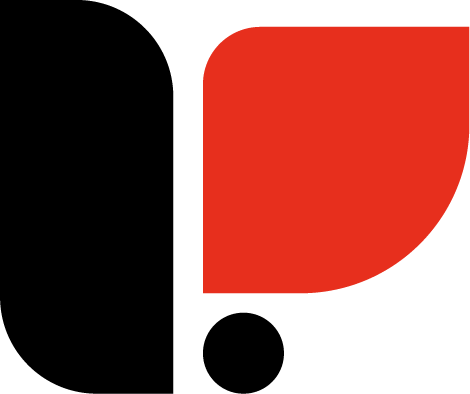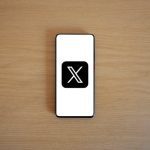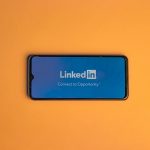Lead generation is essential for any successful marketing strategy. You can drive sales and grow your business by attracting and converting prospects into customers. But how do you generate these leads effectively?
This guide will show you how to use landing pages and Facebook ads to create a streamlined system for generating high-quality leads.
Why Are Landing Pages and Facebook Ads Effective for Lead Generation?
Landing pages provide a focused space where visitors can take action, such as signing up for a newsletter or downloading a resource. Facebook ads amplify this by reaching your target audience with highly tailored offers that direct potential customers to those landing pages. Together, they form a streamlined system for turning interest into leads. A landing page is a dedicated web page that encourages visitors to take a specific action, such as signing up for a newsletter, downloading a resource, or starting a free trial.
Bynerate leads who are interested in what you are offering, and you can create a seamless lead generation system for them. The benefit is as good to you and even more than it is for them. How do you generate these leads, then? We will give you the how-to on generating leads with just a landing page and Facebook ads.
A Guide to Generating Leads
First, you create a lead generation landing page with high conversion rates and integrate it with Facebook Pixel for tracking.
When doing this –
- Create a visually appealing and user-friendly design.
- Ensure your landing page includes a compelling headline, a clear value proposition, engaging visuals, and a strong call-to-action (CTA).
- Optimise the page for mobile uses and fast loading times.
The second thing you do is to define your objectives. Establish clear goals for your lead generation campaign. For example, increase sign-ups, generate inquiries, and identify key performance indicators (KPIs) to measure success, such as conversion rates and cost per lead.
Thirdly, you must define your target audience. This is very important, especially in digital or online businesses. You must know who you’re selling to and who will be interested in what you offer.
Analyse your ideal customer profile and demographics. Use Facebook Audience Insights to gather data on interests, behaviours, and locations. Then, create a detailed audience persona to tailor your messaging effectively.
To shift the focus to the Facebook ads or ads campaigns, ask yourself the one question; ‘Where will my campaigns fit with my account structure?’. To answer this question, you should familiarise yourself with Facebook Ads Manager and how to organise your campaigns.

To effectively manage Facebook ads, it’s essential to understand the structure within Ads Manager, which includes three levels: campaigns, ad sets, and ads. The campaign level defines your overall advertising objective, such as brand awareness or conversions. The ad set level lets you specify your targeting, budget, and schedule, helping you segment your audience and test different strategies. Lastly, the ad level involves creating the actual ads with visuals and copy that resonate with your target audience while not forgetting about placement ad budget allocation.

To develop an effective lead generation campaign using landing pages and Facebook ads, thoroughly research your target audience to tailor your messaging. Then, create a compelling landing page that’s visually appealing and optimised for conversions, featuring a clear call to action (CTA).
In Ads Manager, set up your campaign by selecting your objectives, choosing ad placements, and determining your budget and schedule. Ensure your ads link directly to your landing page to support the CTA. After launching, monitor performance metrics closely and make adjustments to optimise results. Consider A/B testing to refine your strategy further. Lastly, have a follow-up plan for nurturing leads to maximise conversions and engagement.
Integrating Landing Pages With Facebook Ads
Facebook is a standout platform for online advertising, thanks to its large user base and effective targeting options. However, simply running ads isn’t enough for success. Pairing those ads with dedicated landing pages can create a more engaging experience, making it easier for potential customers to take action.
Creating a Seamless User Experience
Your landing page should complement your Facebook ad to ensure a smooth transition for users. This means matching your ad’s messaging, design, and overall tone with the landing page to keep the user journey cohesive.
Directing Ad Traffic to Your Landing Page
Ensure your ad’s CTA directs users to a specific landing page optimised for lead generation. This page should be simple and focus on converting visitors into leads through a well-designed form or offer. For example, if your landing page concerns a free trial sign-up, the CTA will read: “Start Your Free 30-Day Trial!”
Remember to keep it simple and focused on converting leads to customers. Use persuasive copy and engaging visuals and include trust signals to enhance credibility.
Tracking and Measuring Performance
Let’s talk about tracking and measuring performance!
First, it’s worth considering if you’re not using Facebook Pixel on your website yet. It’s a handy tool that lets you monitor users’ activity on your site. You can track their actions, see how well your ads convert, and gather valuable data to help you fine-tune your ads and landing pages.

Next, remember to check your conversion rates regularly! It’s essential to see how many people who clicked on your ad converted into leads. This information is super helpful for adjusting your targeting, ad copy, or even the elements on your landing page to improve your results.
Conclusion
Using landing pages and Facebook ads together is a proven method to generate leads and grow your business.
Here’s a recap of the steps:
- Create a high-converting landing page optimised for mobile.
- Define clear objectives and trackable KPIs.
- Use Facebook Ads Manager to target your ideal audience effectively.
- Integrate Facebook ads with landing pages to create a seamless user journey.
- Continuously track performance, adjust your strategy, and refine your campaign.





